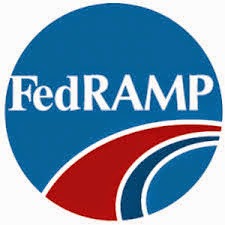Twitter Feed
Microsoft vs Google in Cloud Computing
Many took note of the Randall Stross essay in the New York Times last weekend. In it he succintly described why Microsoft is failing in it’s attempt to bridge the…
IBM at Forrester IT Forum
At the Forrester IT Forum yesterday in Las Vegas, Rick Lechner, VP Enterprise Systems at IBM, made the following comments The changing face of globalization (transformation from exporting to multi-nationals…
HP & EDS
In an interesting take on his Enterprise Architecture blog, Chris Pearson sees the HP acquisition of EDS as a ploy by HP to remain relevant in a cloud computing world.…
The Library of National Intelligence (LNI) – A Possible Cloud Application
In the MAZZ-INT Blog a couple of weeks ago, Joe Mazzafro artile on “Intelliigence and the Concept of Customer” stated that a “realistic business model for the IC to assume…
Net-Centric Enterprise Services – An Update
Net-Centric Enterprise Services (NCES) is about to enter the initial operational test and evaluation phase. NCES are a set of capabilities that support network-centric warfare operations and information sharing. It…
Microsoft Renews Yahoo Bid
Microsoft renews Yahoo bid and is now offering to buy a piece of Yahoo. I believe this is just the opening of the second round. Follow me at https://Twitter.com/Kevin_Jackson
Cloud Computing Risk
CIO.com reviewed the top three concerns that the IT executives have regarding the adoption of cloud computing – security, latency, and SLA. These concerns seem similar to those previously assigned…
Grid vs. Cloud – May 17, 2008
From Geva Perry’s April 25th blog Cloud Computing overtaking the term Grid Computing With the term “cloud computing” rapidly being hyped everywhere, I did this little exercise on Google Trends…
Blogsphere Clouds – May 16, 2008
The cloud is billowing in the blogsphere !! Virtual Computing in the Cloud — How a Universal Dialtone Will …Virtual Cloud Computing represents the next wave of virtualization and offers…
Gartner on Cloud Computing / Yahoo vs. Icahn- May 15, 2008
Gartner thinks that cloud computing may be the next big thing: By 2012, 80 percent of Fortune 1000 enterprises will pay for some cloud computing service and 30 percent of…
 One of the questions I’ve been asked from the beginning of the Federal Cloud First initiative, is, “If my data is in The answer is not as clear-cut as the question. In theory, most cloud services offer extremely resilient platforms and a modicum of disaster recovery is built in. In fact, those cloud service provider (CSP) systems that have received an ATO through the FedRAMP program do have fairly sophisticated contingency plans in place, with Recovery Time Objectives (RTO) and Recovery Point Objectives (RPO) clearly articulated- and plenty of alternate processing sites, policies, and procedures in place in the event of a contingency. So, it’s in there right?
One of the questions I’ve been asked from the beginning of the Federal Cloud First initiative, is, “If my data is in The answer is not as clear-cut as the question. In theory, most cloud services offer extremely resilient platforms and a modicum of disaster recovery is built in. In fact, those cloud service provider (CSP) systems that have received an ATO through the FedRAMP program do have fairly sophisticated contingency plans in place, with Recovery Time Objectives (RTO) and Recovery Point Objectives (RPO) clearly articulated- and plenty of alternate processing sites, policies, and procedures in place in the event of a contingency. So, it’s in there right?
Not so fast- it depends on what services you are acquiring and how you are deploying and managing them. The baseline of this discussion is however rooted in availability and uptime.
the cloud, isn’t my disaster recovery built in? Isn’t that the benefit of being in the cloud?”
- Amazon – 28.23 hours
- Rackspace – 97.98 hours
- Verizon – 136 hours
(This post was written as part of the Dell Insight Partners program, which provides news and analysis about the evolving world of tech. To learn more about tech news and analysis visit TechPageOne. Dell sponsored this article, but the opinions are our own and don’t necessarily represent Dell’s positions or strategies.)
( Thank you. If you enjoyed this article, get free updates by email or RSS – © Copyright Kevin L. Jackson 2012)
Cloud Computing
- CPUcoin Expands CPU/GPU Power Sharing with Cudo Ventures Enterprise Network Partnership
- CPUcoin Expands CPU/GPU Power Sharing with Cudo Ventures Enterprise Network Partnership
- Route1 Announces Q2 2019 Financial Results
- CPUcoin Expands CPU/GPU Power Sharing with Cudo Ventures Enterprise Network Partnership
- ChannelAdvisor to Present at the D.A. Davidson 18th Annual Technology Conference
Cybersecurity
- Route1 Announces Q2 2019 Financial Results
- FIRST US BANCSHARES, INC. DECLARES CASH DIVIDEND
- Business Continuity Management Planning Solution Market is Expected to Grow ~ US$ 1.6 Bn by the end of 2029 - PMR
- Atos delivers Quantum-Learning-as-a-Service to Xofia to enable artificial intelligence solutions
- New Ares IoT Botnet discovered on Android OS based Set-Top Boxes

